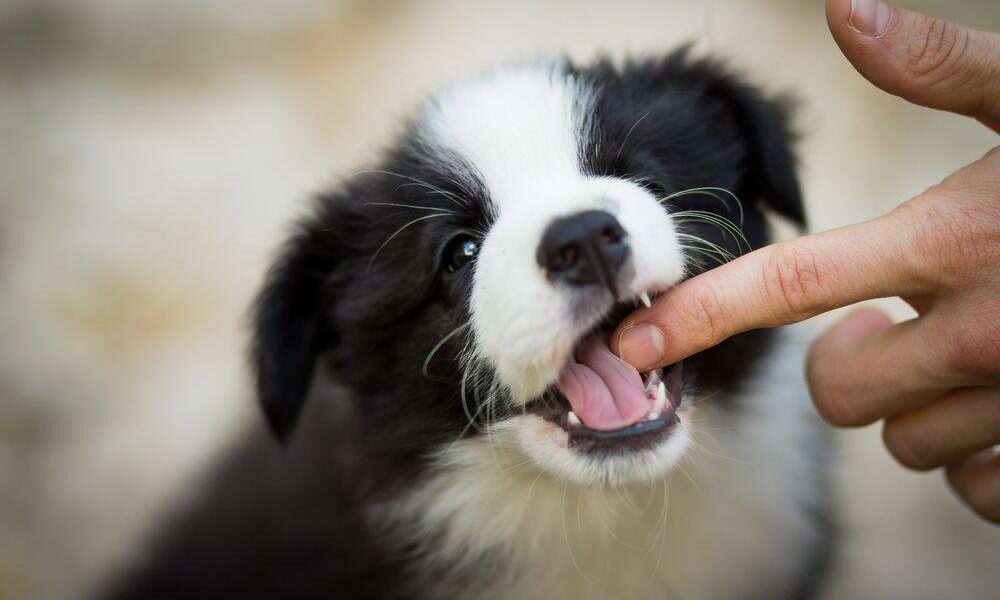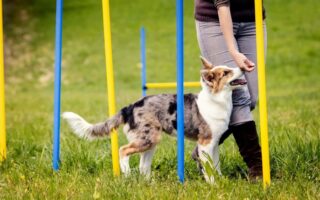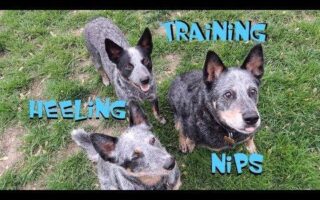Taming the Tiny Teeth: A Guide to Curbing Puppy Biting
Bringing a puppy into your home is like inviting a bundle of joy, energy, and—let’s be honest—sharp little teeth. Those playful nibbles and enthusiastic nips might seem adorable at first, but as your furry friend grows, those teeth become less cute and more concerning. Biting is a natural behavior for puppies; it’s how they explore their world and communicate with their peers. However, as responsible pet owners, it’s imperative to guide them towards more appropriate ways of interacting. In this article, we’ll delve into effective strategies to stop puppy biting, helping you foster a loving relationship while ensuring your puppy learns valuable lessons about boundaries. With the right approach, you can turn those enthusiastic chomps into gentle nuzzles, paving the way for a lifelong bond built on trust and respect.
Table of Contents
- Understanding the Causes of Puppy Biting
- Effective Training Techniques to Curb Biting Behavior
- The Role of Play and Interaction in Reducing Biting
- Long-Term Strategies for Promoting Gentle Mouth Behavior
- Q&A
- To Conclude
Understanding the Causes of Puppy Biting
Puppy biting is a common behavior that can often be traced back to a few key causes. Understanding these reasons is crucial for pet owners looking to curb this habit. One primary factor is teething, which occurs when puppies experience discomfort as their adult teeth come in. To alleviate the pain, they might resort to biting, chewing, and mouthing anything they can get their paws on. Additionally, exploration plays a significant role; puppies investigate their world much like human infants do, using their mouths to explore textures and tastes. This instinctual behavior is natural but can easily be misdirected towards human hands or furniture.
Another important aspect to consider is socialization and play behavior. Puppies learn bite inhibition from interacting with their littermates and mothers, but if they are separated too early or lack proper socialization, they may not develop an appropriate understanding of biting limits. Furthermore, excess energy can exacerbate the problem. High-energy breeds or active puppies may bite more frequently if they aren’t getting enough physical and mental exercise to channel their enthusiasm. Providing appropriate chew toys and engaging in regular playtime can significantly reduce unwanted biting behavior.
Effective Training Techniques to Curb Biting Behavior
To effectively manage and reduce biting behavior in puppies, a combination of positive reinforcement techniques is essential. Start by redirecting your puppy’s biting to appropriate chew toys. Whenever your puppy attempts to nip at your hands or clothing, gently guide them towards a toy. This not only helps satisfy their urge to chew but also teaches them what is acceptable to bite. Consistency is key, so ensure that all family members follow this method to avoid confusion for your puppy.
In addition to redirection, implementing a structured routine can significantly benefit your puppy’s behavior. Engage in regular play sessions to tire them out and reduce excess energy that may lead to biting. Training sessions focusing on commands such as “sit”, “stay”, or “leave it” can also serve as mental stimulation. Here’s a simple table outlining the techniques and their objectives:
| Technique | Objective |
|---|---|
| Redirection to Toys | Teach appropriate biting behavior |
| Regular Playtime | Reduce excess energy |
| Basic Commands Training | Enhance focus and discipline |
The Role of Play and Interaction in Reducing Biting
The journey to curbing puppy biting can be significantly enhanced through the incorporation of play and interaction. Engaging your puppy in energetic, structured play sessions allows them to expend excess energy and develop better control over their bite. Activities such as tug-of-war, fetch, or simple chase games not only provide physical stimulation but also establish a bond between you and your puppy. During these interactions, it’s essential to use toys designed for chewing, redirecting their biting instincts towards appropriate items instead of your hands or clothes.
Additionally, socializing your puppy with other dogs and people introduces them to various stimuli and interactions that are crucial for their development. This exposure helps them learn bite inhibition through feedback from their peers. Consider incorporating the following strategies in your routine:
- Supervised playdates: Invite dogs of varying ages and temperaments to create positive experiences.
- Training sessions: Utilize short, engaging sessions to teach commands and reinforce positive behaviors.
- Interactive toys: Provide toys that promote mental and physical exercise, keeping your puppy entertained.
Long-Term Strategies for Promoting Gentle Mouth Behavior
To foster gentle mouth behavior in your furry friend, consider integrating positive reinforcement techniques into your daily routine. This involves rewarding your puppy every time they play gently, whether it’s with treats, praise, or toys. It’s crucial to remain consistent, as puppies thrive on repetition and understanding of what behaviors elicit positive responses. Additionally, introducing a variety of interactive toys can fulfill their natural chewing instincts while steering them away from your hands and clothing.
Another effective strategy is to establish regular playtime routines that include short training sessions. This helps channel their energy and excitement in a controlled manner. During these sessions, practice commands such as “leave it” or “gentle” to reinforce the desired behavior. Moreover, be mindful of your own actions; avoid roughhousing or games that inadvertently encourage biting. Instead, adopting a calm demeanor and using soothing tones when correcting undesirable behavior can significantly influence your puppy’s learning process. Consider these key elements for successful training:
- Consistency: Apply rules uniformly across all interactions.
- Timing: Offer praise or corrections immediately after the behavior occurs.
- Patience: Allow time for your puppy to grasp the concepts being taught.
| Behavior | Expected Outcome |
|---|---|
| Positive Reinforcement | Encourages gentle interactions |
| Routine Play Sessions | Reduces excess energy and biting |
| Calm Corrections | Promotes understanding and trust |
Q&A
Q&A: How to Stop Puppy Biting
Q1: Why do puppies bite?
A: Puppies explore their world primarily through their mouths. Biting is a natural behavior for them, often due to teething discomfort or to engage with their environment, including play with their littermates. It serves as a way for them to learn boundaries and social cues.
Q2: When does biting become a problem?
A: Biting can become problematic when it escalates to pain or injury for humans or other animals. If your puppy is biting too hard during play or excessively nipping at hands and feet, it’s important to address this behavior before it becomes a habit.
Q3: What are some effective strategies to reduce puppy biting?
A: Here are several techniques you can employ:
- Redirecting Attention: If your puppy is biting you, redirect their focus to an appropriate chew toy or bone. This teaches them what is acceptable to chew on.
- Use a Firm “No”: When your puppy bites, respond with a firm but calm “no” or “ouch.” This helps them understand that their actions have consequences.
- Time-Outs: If biting continues, briefly remove your puppy from the play situation to give them a timeout. This reinforces that biting leads to losing playtime.
- Encourage Gentle Play: Reward your puppy with treats and praise when they play nicely or chew gently. Positive reinforcement can go a long way.
Q4: How do I know if I’m training them correctly?
A: Consistency is key in training. If your puppy starts to bite less and engages with toys instead, you are likely on the right track. Look for signs of improvement in their behavior, such as more gentle interactions with people and reduced biting during play sessions.
Q5: Can socialization help with biting?
A: Absolutely! Socializing your puppy with other dogs and people can teach them proper play behavior and bite inhibition. They learn essential social cues from other dogs, helping them understand when their biting is too hard or inappropriate.
Q6: Are there any resources or tools that can assist in training?
A: Yes! Various toys are designed to soothe a teething puppy’s gums, and training books or online courses offer structured advice on managing biting. Additionally, local puppy training classes provide opportunities to learn from experienced trainers while practicing socialization in a controlled environment.
Q7: What if my puppy’s biting does not improve?
A: If you find that your puppy’s biting is persistent and unmanageable despite your efforts, consider consulting a professional dog trainer or a veterinarian. They can assess your puppy’s behavior and suggest tailored strategies to help curb their biting tendencies.
Q8: Is there an age when puppies stop biting?
A: Most puppies will outgrow the biting phase by the time they reach adulthood, typically around 6-12 months. However, early intervention and consistent training can significantly reduce this behavior more quickly.
In Conclusion:
Puppy biting is a common challenge faced by many pet owners, but with patience, consistency, and the right techniques, you can guide your furry friend towards more appropriate behaviors. Remember, every puppy is unique, so tailor your approach to fit their personality and needs!
To Conclude
As we wrap up our journey through the world of puppy biting, it’s important to remember that patience and consistency are your best allies. These little bundles of joy are not just challenging your patience; they are also exploring their new surroundings and honing their skills for social interaction. By investing your time and energy into understanding and redirecting their natural behaviors, you’ll pave the way for a well-mannered pup and a harmonious home.
Each nipped finger and playful growl is a step towards growth—both for you and your furry friend. Keep nipping those biting habits in the bud with positive reinforcement and plenty of chew toys, and soon enough, you’ll be rewarded with a loving companion who knows how to express affection without the teeth. Here’s to many joyful, bite-free adventures ahead, where wagging tails and gentle play become the hallmark of your puppy’s development. Happy training!



